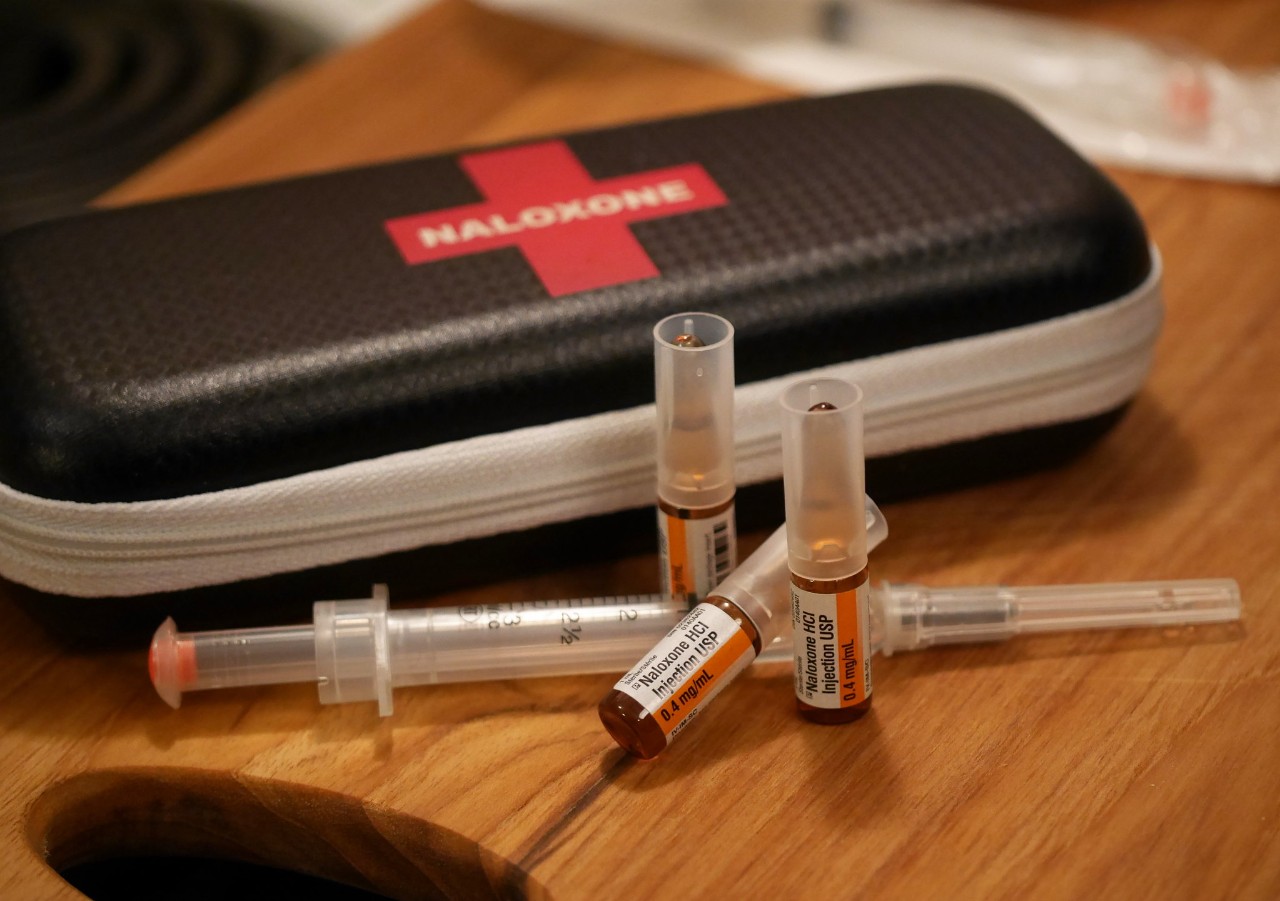
UC study shows dramatic increase in naloxone dispensing in Ohio
It’s not an over-the-counter drug, but naloxone can now be dispensed by a pharmacist in some states
A new study by pharmacy researchers at the University of Cincinnati shows a 2,328% increase in the number of naloxone prescriptions dispensed in Ohio. The increase occurred since 2015 when the Ohio General Assembly approved a law that allows pharmacists to dispense naloxone — the life-saving medicine given to those who overdose on drugs such as heroin — without a prescription.
Researchers also found that low-employment counties had 18% more naloxone prescriptions dispensed per month compared to high employment counties.
The study, “Association between a Pharmacist Naloxone Dispensing Law and Naloxone Dispensing Rates in Ohio”, now appears in the leading medical journal JAMA Network Open. It is the first of a two-part series by researchers from the UC James L. Winkle College of Pharmacy and funded by the U.S. Centers for Disease Control and Prevention.
This research aligns with UC's strategic direction, Next Lives Here, emphasizing discovery by investigating problems and innovating solutions.
“Our study shows that this change in the Ohio law allowed pharmacists to have more opportunity to participate in the management of patients addicted to opioids,” says the study’s lead faculty researcher Pam Heaton, a professor of pharmacy practice at UC’s Winkle College.
Naloxone (commonly known as Narcan) is a medication called an opioid antagonist that is used to counter the effects of opioid overdose, such as with morphine and heroin. The majority of states allow pharmacists to dispense the medicine without a prescription under varying guidelines. As of May 2019, approximately 75% of community pharmacies in Ohio were registered to dispense naloxone without a prescription.
According to the Ohio state ruling, the law allows pharmacists and pharmacy interns to dispense naloxone using a specific physician approved protocol to: (1) An individual who there is reason to believe is experiencing or at risk of experiencing an opioid-related overdose; (2) A family member, friend or other person in a position to assist an individual who there is reason to believe is at risk of experiencing an opioid-related overdose; or (3) A peace officer as defined in section 2921.51 of the Revised Code.
In the study, the research team compared 18 months of post-policy data to pre-policy data from Ohio’s Medicaid records and the database of the Kroger Co.’s Ohio pharmacies, which includes prescriptions for patients with all types of insurance, not just Medicaid. Ohio’s Medicaid population is approximately 2.2 million, or 21% of the state’s population of 11.42 million. Among Medicaid recipients, the total number of patients receiving naloxone increased from 183 patients in the pre-policy period to 3,847 patients in the post-policy period. The analysis using the Kroger data confirmed an increase in the number of naloxone prescriptions dispensed for all types of insurance including cash prescriptions.
The uptick in low employment areas, professor Heaton says, is most likely because the local pharmacy is often the sole health care contact for people living in these locations.
“We do not know whether the naloxone was for personal use, a family member or a friend because the law was written to specifically allow access,” Heaton says, adding that the study did not seek to quantify the impact of increased naloxone distribution on the rate of opioid abuse or mortality from overdose, but was designed to address access.
“Overdoses are not a planned event so during an emergency is not the time to try and access naloxone. The intent is for any adult to be able to go to a pharmacy and purchase naloxone for themselves or for anybody who might need it, so they are adequately prepared to administer a lifesaving medication,” says Heaton.
Prior studies, however, estimate up to a 14% reduction in death by overdose in states where access is increased, says Neha Gangal, the study’s first author. The reduction is pivotal, Gangal says, considering that drug overdose deaths doubled in the last decade; 70,200 deaths were reported in 2017 in the United States and between 2015 and 2017, among all states, Ohio had the second highest number of opioid-related deaths.
The bottom line, Gangal says, is that “legal barriers needed to be removed to address this important public health crisis. Pharmacists positively impact the health of patients every day and work tirelessly to address the opioid epidemic. By providing naloxone, pharmacists save lives.”
Other study contributors from the Winkle College of Pharmacy include Neil MacKinnon, dean and professor; Jill Boone, professor of pharmacy practice; Ana Hincapie, assistant professor of pharmacy practice; and Neha Gangal, PhD candidate pharmacy practice. Roman Jandarov, assistant professor of biostatistics and bioinformatics at the UC College of Medicine, was also a contributor. Additionally, Kroger Health and the Ohio Department of Health were research partners on the study.
Photo header: NIH Gallery/Jeff Anderson
The University of Cincinnati is classified as a Research 1 institution by the Carnegie Commission and is ranked in the National Science Foundation's Top-35 public research universities. UC's graduate students and faculty investigate problems and innovate solutions with real-world impact. Next Lives Here.
Related Stories
Why can perimenopause make migraines worse?
April 23, 2025
Experts say women who have migraine symptoms linked to their menstrual cycle are prone to migraine problems during perimenopause.
CCM welcomes Tyler Ehrlich as Assistant Director of Wind Studies
April 23, 2025
UC College-Conservatory of Music Dean Pete Jutras has announced the appointment of Tyler Ehrlich, DMA, as CCM's new Assistant Professor and Assistant Director of Wind Studies. In this role, which begins on Aug. 15, Ehrlich will conduct the CCM Wind Ensemble, oversee CCM’s doctoral cognate in wind conducting and teach conducting, literature and music education courses.
UC study finds vision loss fear may keep some from having...
April 23, 2025
A new University of Cincinnati study finds vision loss fears may deter some patients from cataract surgery, despite it being the only effective treatment. The research underscores the role of doctor-patient relationships in medical decisions.
